Histograms as 2D or 3D vectors for new physics searches with a background-only and S+B fit to observed data.
A simple histogram with just two bins, comparing a B-only an S+B model to observed data.
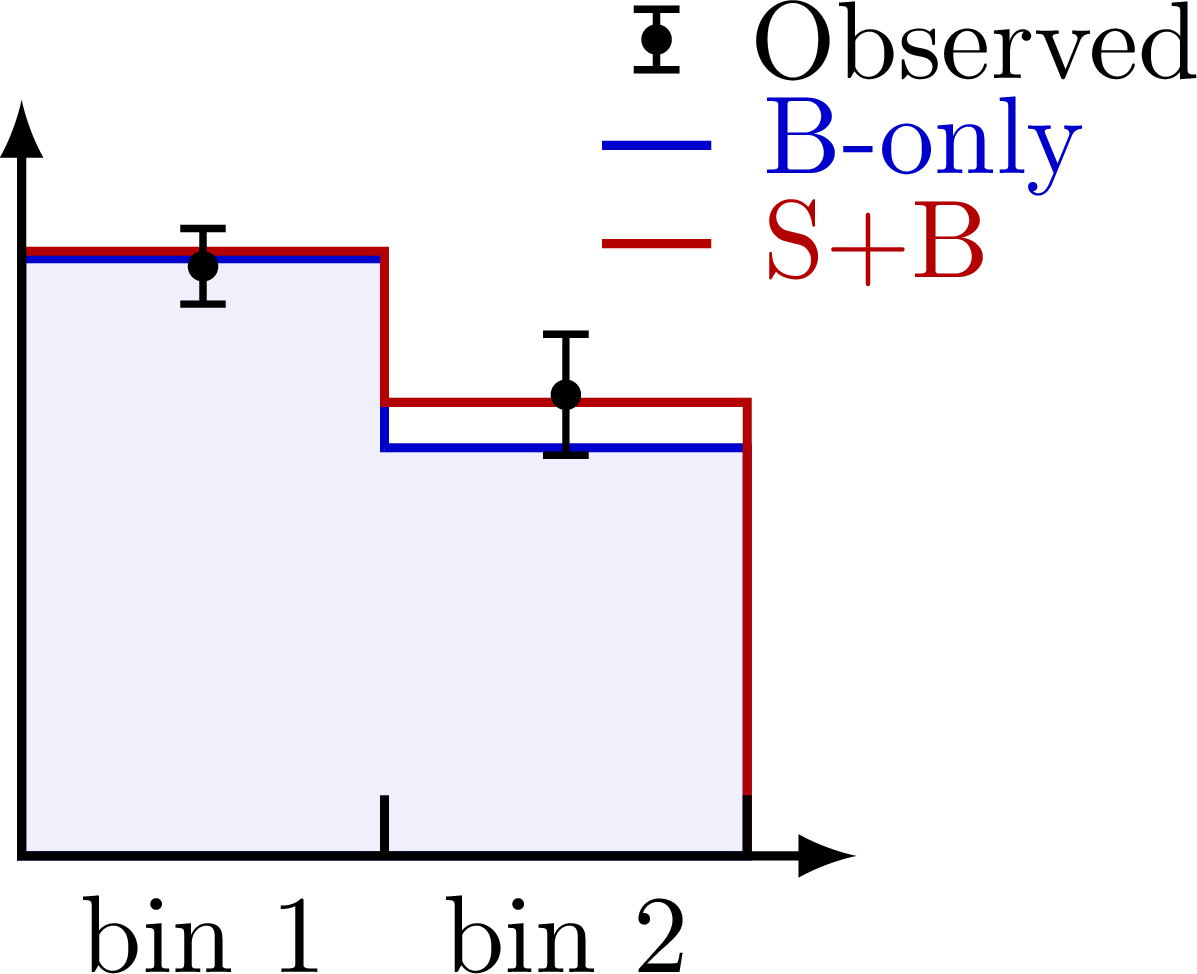
The above two-bin histograms can be converted to 2D vectors.

Systematic variations of the S+B histogram.
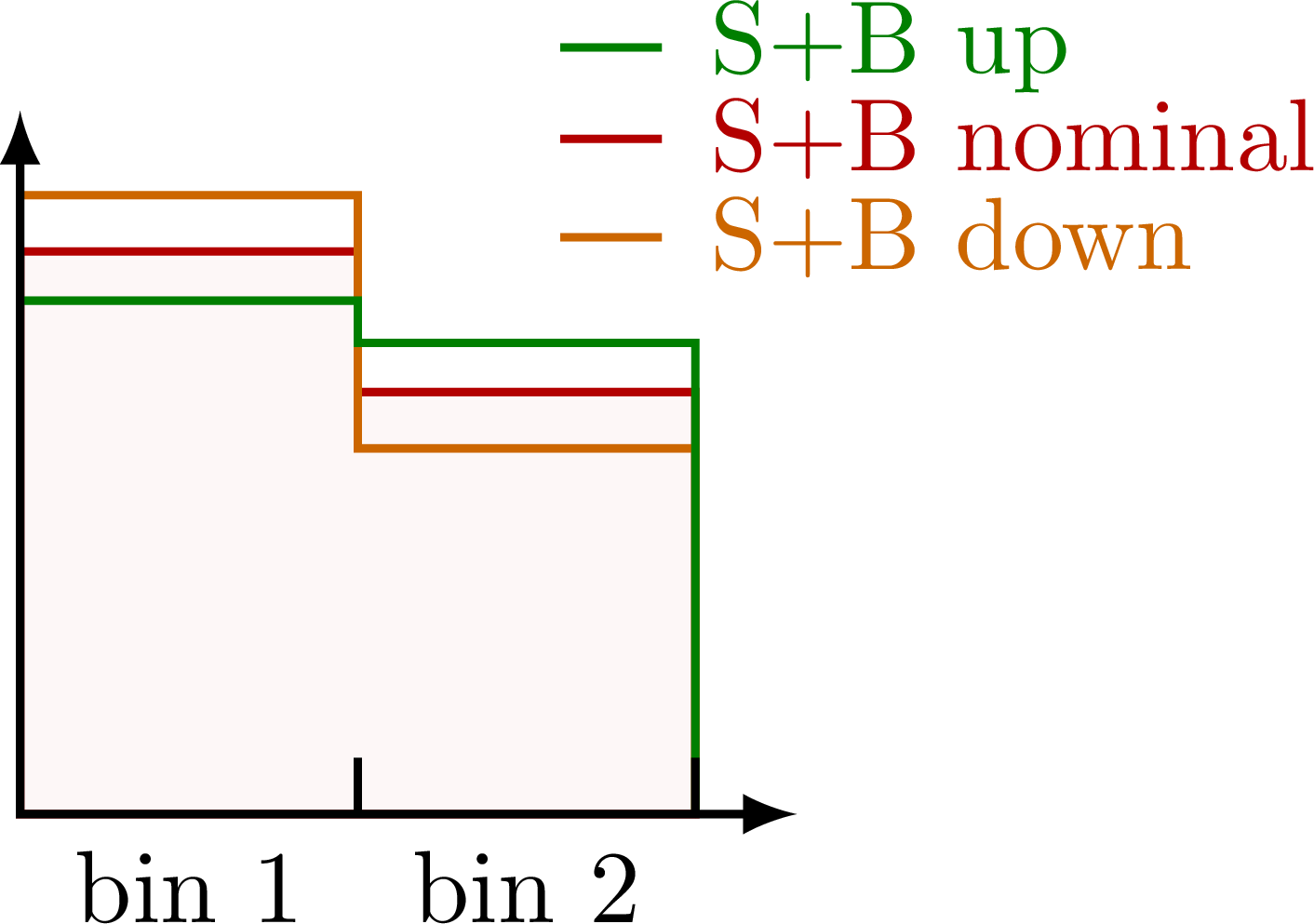
Systematic variations represented by vector (differences).
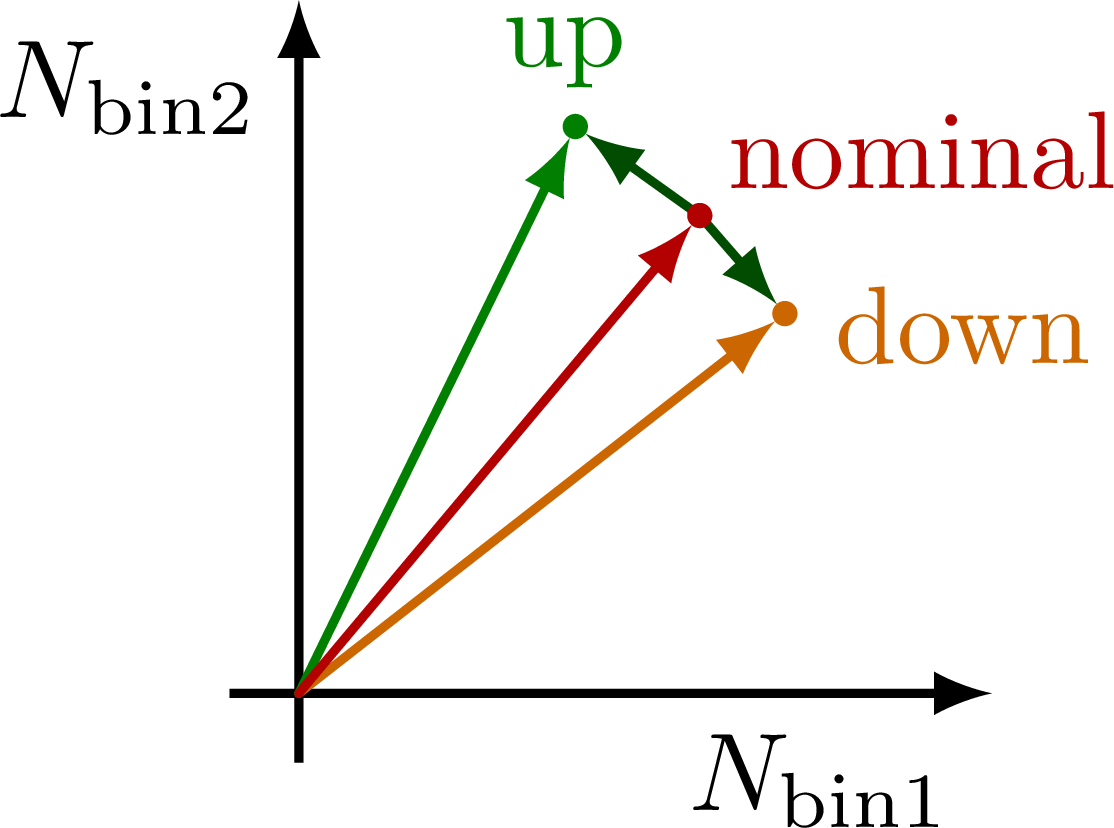
A simple histogram with just three bins, comparing a B-only an S+B model to observed data.
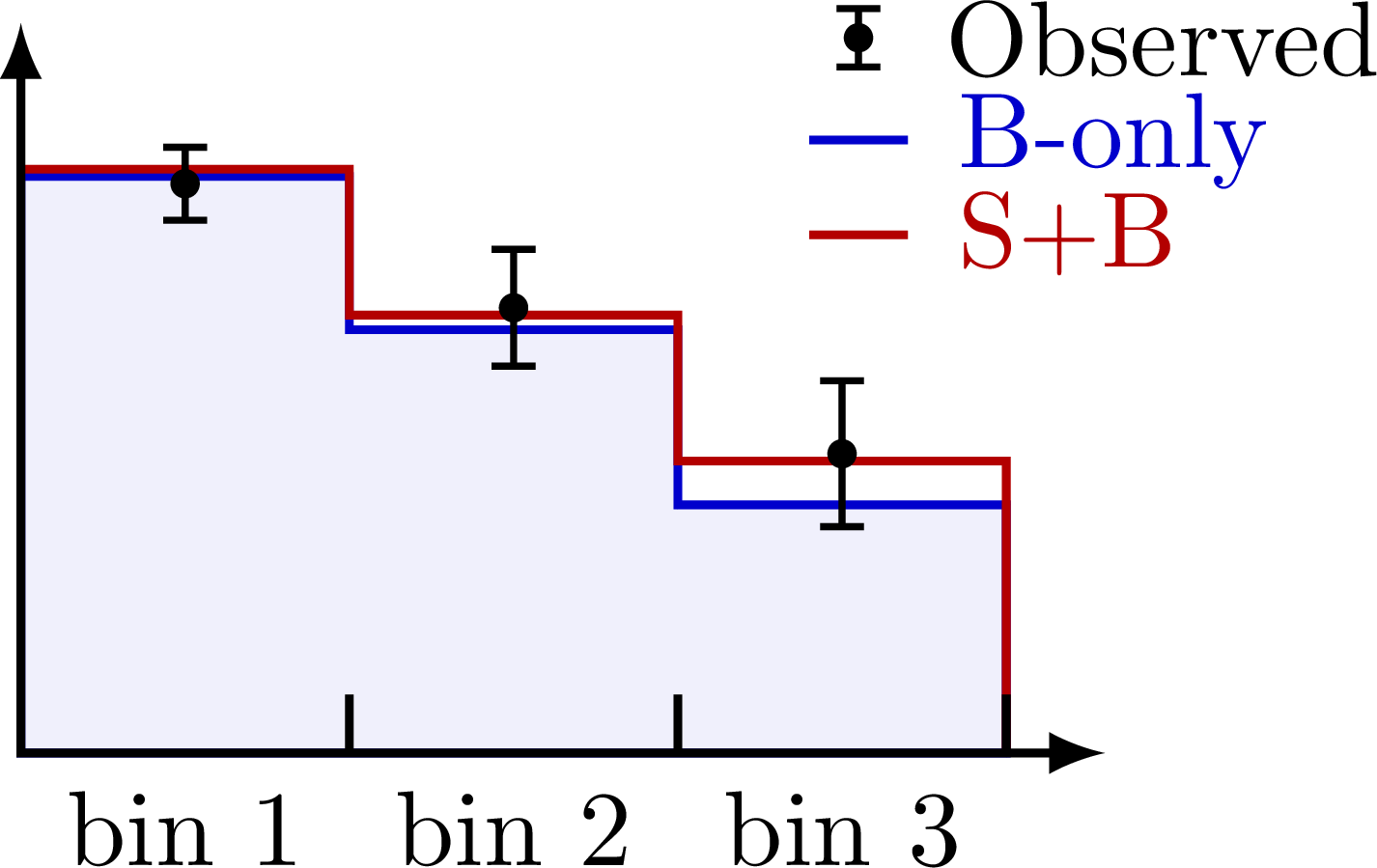
The above three-bin histograms represented by 3D vectors. The vectors of the two models and observed data span a unique 2D plane in 3D. This can be easily generalized to
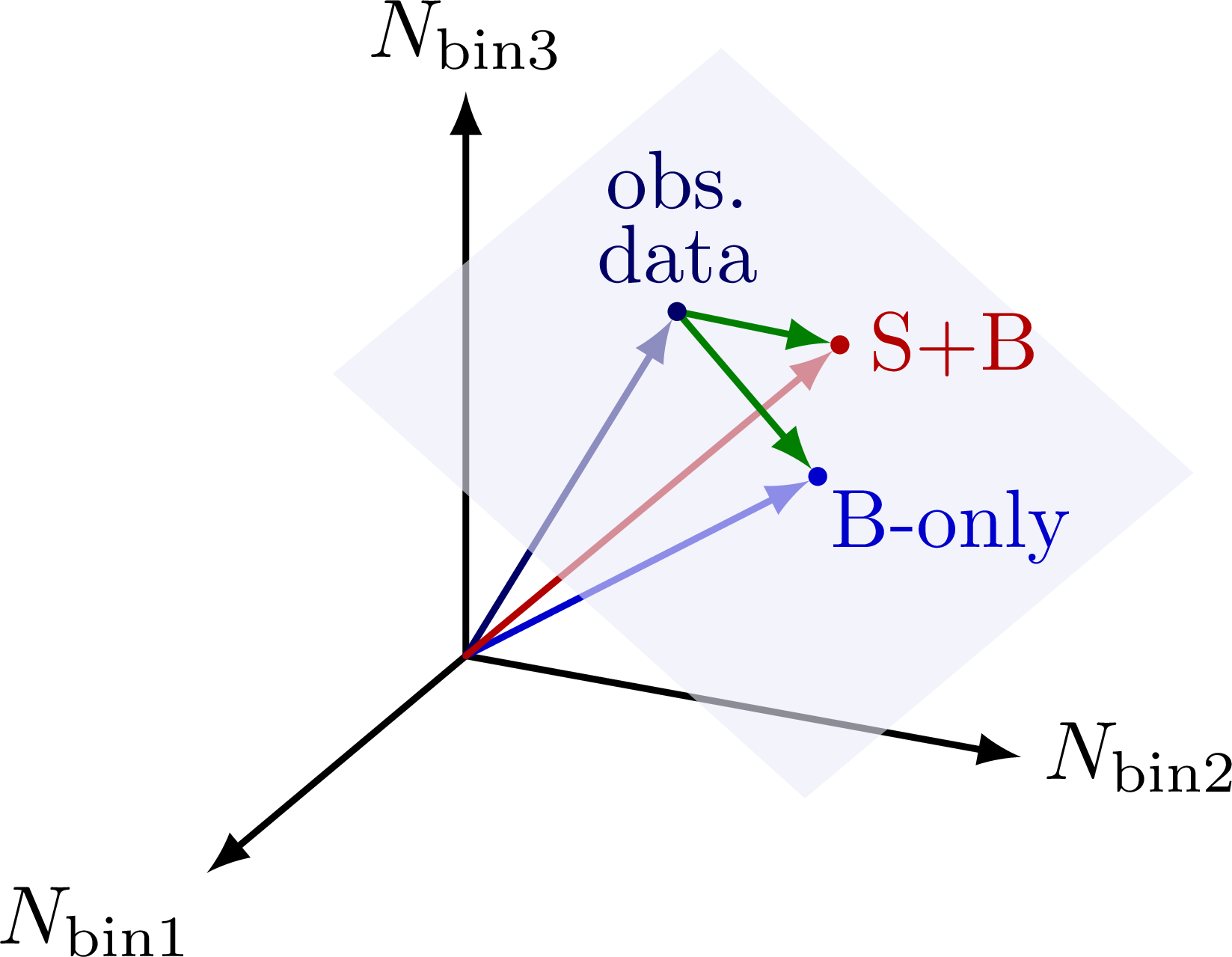
Defining an orthonormal basis in the 2D plane.
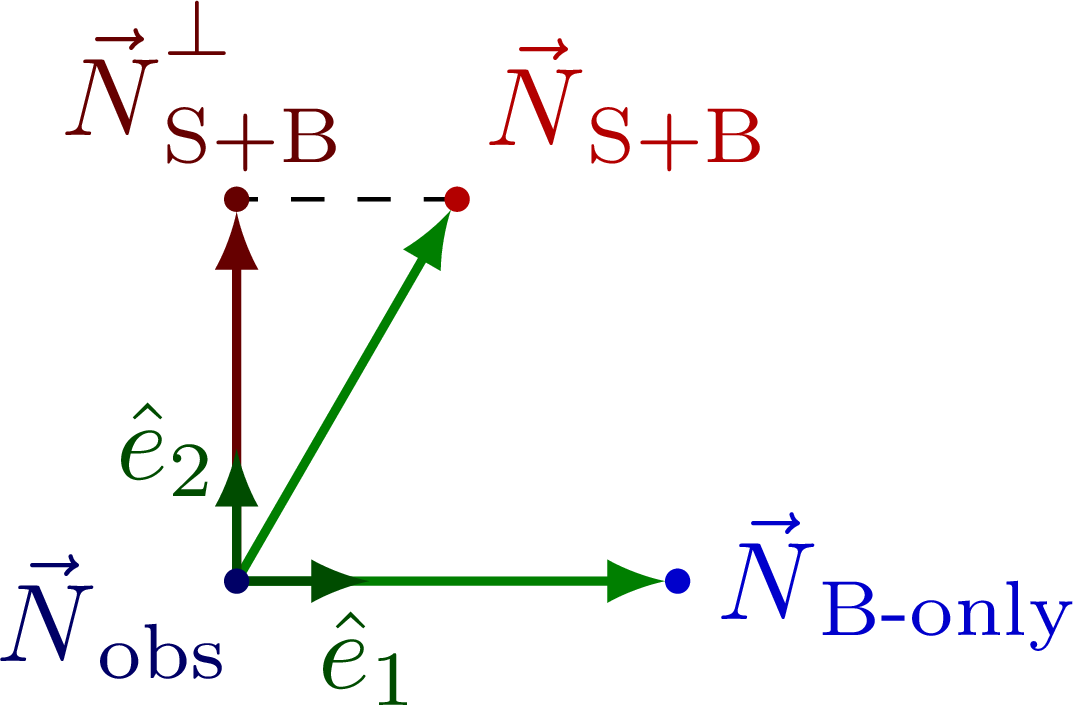
Edit and compile if you like:
% Author: Izaak Neutelings (November 2021)% Inspiration: Kyle Cormier\documentclass[border=3pt,tikz]{standalone}\usepackage{physics}\usepackage{tikz}\usepackage{tikz-3dplot}%\usepackage[outline]{contour} % glow around text\usepackage{xcolor}\colorlet{myred}{red!70!black}\colorlet{myblue}{blue!80!black}\colorlet{mygreen}{green!50!black}\colorlet{myorange}{orange!80!black}\colorlet{mydarkred}{red!40!black}\colorlet{mydarkblue}{blue!40!black}\colorlet{mydarkgreen}{green!30!black}\colorlet{mydarkorange}{orange!60!black}\tikzset{>=latex} % for LaTeX arrow head\tikzstyle{vector}=[->,mygreen,thick,line cap=round]\tikzstyle{dot}=[circle,inner sep=0.8,outer sep=0.02]%\contourlength{1.3pt}\newcommand*{\vv}[1]{\vec{\mkern0mu#1}} % aligned vector arrow\def\tick#1{\draw[thick] (#1) --++ (0,0.08);}\def\point#1#2{\fill (#1) circle(0.02);\draw[line width=0.65] (#1)++(0,#2) --++ (0,-2*#2);\draw[line width=0.65] (#1)++(-0.03,#2) --++ (0.06,0);\draw[line width=0.65] (#1)++(-0.03,-#2) --++ (0.06,0);}\begin{document}% HISTOGRAM - 2 bins\begin{tikzpicture}[scale=2.4]\coordinate (O) at (0,0,0);\def\w{0.48}% HISTOGRAMS\draw[thick,myblue,fill=myblue!6](0,0) -- (0,0.79) -| (\w,0.54) -| (2*\w,0) -- cycle;
Click to download: histogram_vectors.tex • histogram_vectors.pdf
Open in Overleaf: histogram_vectors.tex

